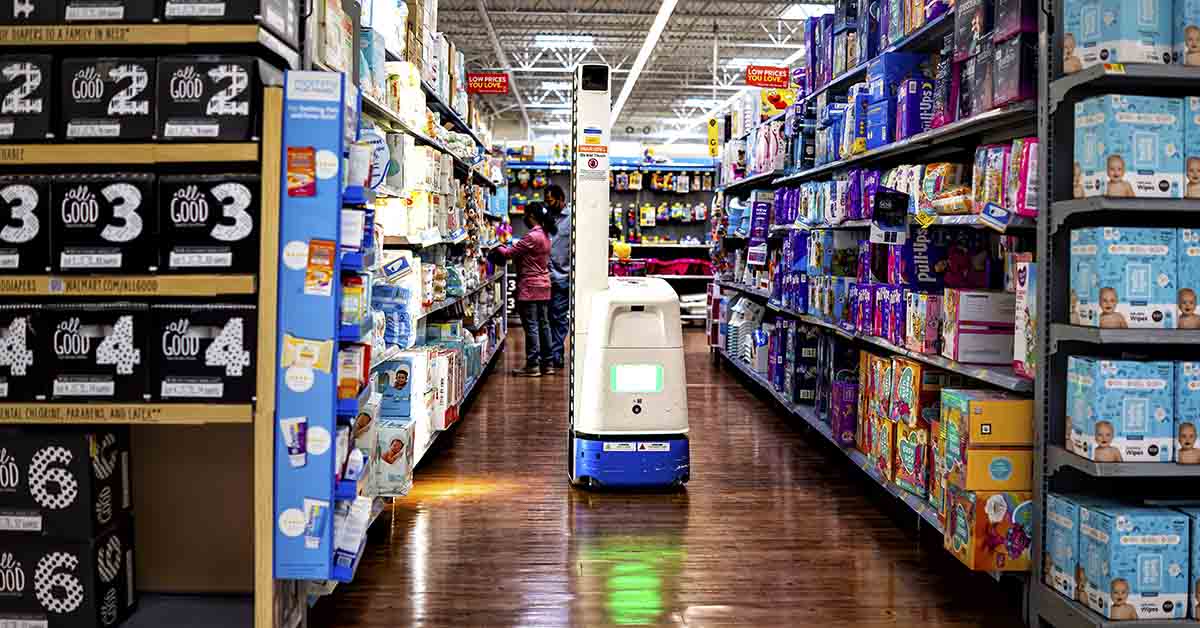It’s no secret that several companies, both large and small, have been downsizing or shutting down altogether. However, Walmart recently shared that in addition to closing some locations, they plan to incorporate, primarily, job automation into their workforce.
Plans to Make a Change
Job automation has become a more common trend among businesses in recent years, which has unsurprisingly elicited mixed responses from the general public. Walmart explained its plans for 65% of stores to use job automation as each store’s primary source of service. The plans are set to take place by the end of Walmart’s fiscal year in 2026 and were announced a few days after Walmart disclosed, they would be doing layoffs. An annual investor meeting was held in Tampa, Florida to determine a more cost-effective avenue for online orders. As a result, they announced 2,000 employees, whose jobs are to fill online orders, will be laid off to shift resources into job automation. The shift is projected to speed up order processing and package fulfillment.
Job Automation Cuts Costs
Walmart is a massive company with more than 1 1/2 million employees across the nation, and 60,000 employees internationally. Therefore, the announcements have caused a stir among the public, wondering if more employees will be let go in the near future. Based out of Bentonville, Arkansas, the retailer explained, “As the changes are implemented across the business, one of the outcomes is roles that require less physical labor but have a higher rate of pay.” The company has expressed that through job automation, it will cut costs by about 20%.
Adding, “Over time, the company anticipates increased throughput per person, due to the automation while maintaining or even increasing its number of associates as new roles are created.” Consequently, Walmart anticipates the change to job automation may actually increase job supply throughout the nation.
Investing in Job Automation
With the billions that Walmart has invested into the new technology, comes a trending discussion. One that regards whether or not employees are making livable wages. The company has come under fire for its treatment of employees, with a few lawsuits along the way. Coupling that with the recent announcement to invest into technology and lay off employees, many are left wondering how job automation will affect job supply for nearly a million employees.
What is Job Automation
The widely spread belief that job automation will take away jobs, without creating more, has likely come from lack of information. In order to get the full spectrum, it’s important to understand exactly what job automation is. Simply explained, job automation is, “substituting technology for human labor to perform specific tasks or jobs.” Several examples have already been incorporated into businesses in recent years. One example is to use the drive-thru or walk-up ATM, rather than seeing a bank teller. Another example is the help kiosks at airports and fast-food restaurants. Job automation comes with some amazing benefits, specifically regarding the medical field, as robots have been shown to perform surgery more steadily and with more precision than humans.
Researcher’s Results
More good news about job automation comes from Oxford University’s Carl Benedikt Frey Michael Osborne. The pair authored a 2013 “working paper“, to determine how job automation affects job availability for average citizens. The paper notes that results vary from occupation to occupation. However, the general consensus, according to Forbes, is that on average companies with job automation have actually increased demand for human workers. “Any employment loss in our data we found came from the non-adopting firms. These firms became less productive, relative to the adopters. They lost their competitive advantage and, as a result, they had to lay off workers.” explained researchers.
The idea is that because job automation increases productivity on a larger scale, there will be a need for more workers to help keep up with demand. Furthermore, technology does occasionally need repair or maintenance, which opens up a whole new job category for engineers and mechanics. Additionally, human error occurs far more than computer error, meaning that efficiency will also help to boost processing time, and cost-effectiveness.
Creating a Balance
Although job automation does create and take away jobs, many are left wondering how everything will balance out. For example, the aforementioned jobs required to maintain machines, also require a certification or degree. In contrast, numerous Americans don’t have certain qualifications, let alone in these required industries. Therefore, they will need further training, which can become costly for the employee who may already struggle to make ends meet.
Adapting to Change
Fortunately, this isn’t the first time America has faced this kind of controversy in the workplace. The industrial revolution did away with numerous jobs but created plenty of factory jobs such as those required to clean, refill, and work alongside the newly developed machines. The decision for job automation will certainly displace workers, forcing some to pursue other career paths. On the other hand, it will also help generate a more efficient work environment, and ultimately create more jobs. Furthermore, as explained by Walmart this change will also do away with lower paying job titles. Therefore, new, more complex, jobs will have higher wages than those previously let go.
There are pros and cons to nearly everything in life. It’s cliche, but nothing is black and white. All or nothing. Or all good or all bad. Job automation will undoubtedly change the course of the workplace. However, every new revolution, era, and generation creates change and reshapes the direction society is headed. As a result, it’s best to be prepared for the worst but also take a breath and watch how the future unfolds. Confidently knowing that humans are adaptive and will learn to navigate these changes, as they always have in the past.

